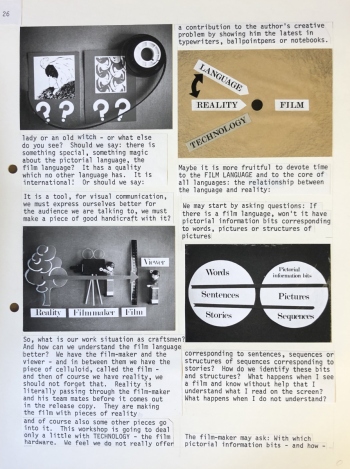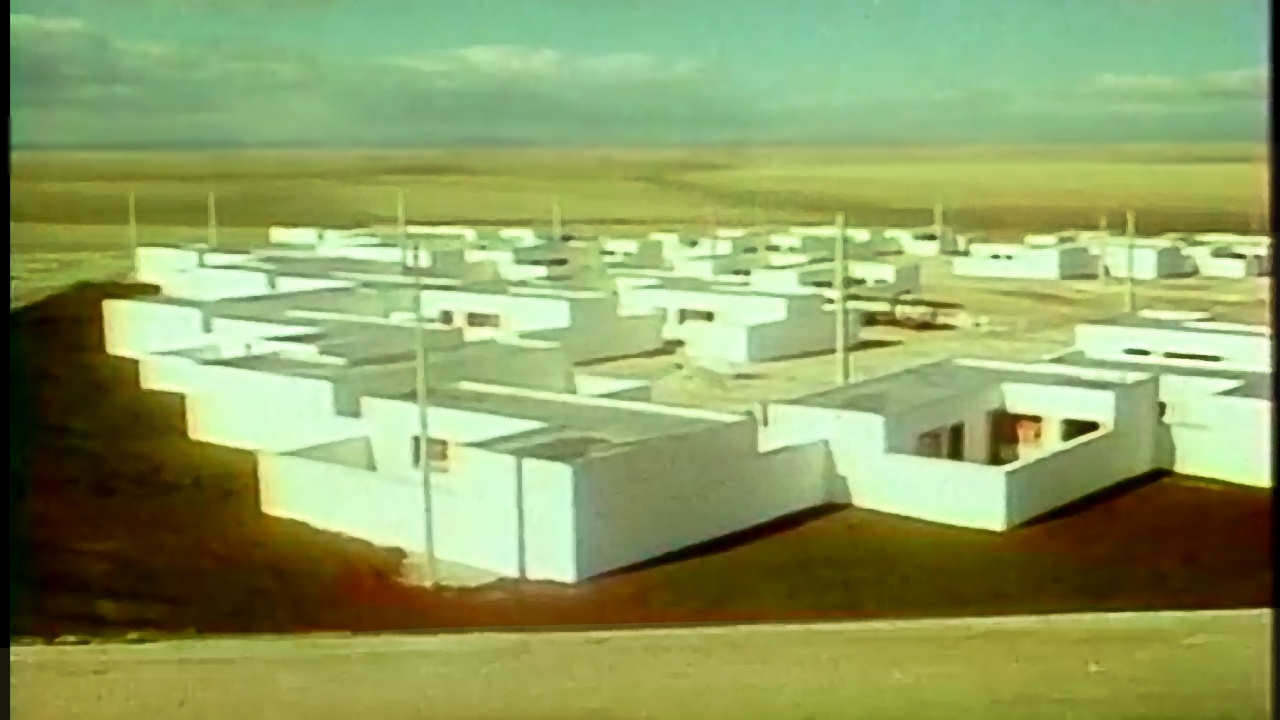Lecture by Felicity D. Scott (GSAPP, Columbia University) with response by Kjetil Fallan (UiO): “Governing Governments: Habitat’s Audiovisual Program, c. 1976”
Welcome to a lecture by Felicity D. Scott on the audiovisual documentary program that was developed for Habitat: The United Nations Conference on Human Settlements in 1976. In her talk, Scott will look at how these films presented ideas of “human settlements” that tied into Western ideological narratives.

Preparing for Habitat: The United Nations Conference on Human Settlements, Maurice Strong, Secretary General of the UN Environment Program (UNEP), proposed to his governing council that conventional conference reports and verbal presentations be supplemented by audio-visual techniques at the 1976 conference. If the initial idea was to produce a multi-media exhibition demonstrating “mutual aid” strategies then in line with World Bank mandates that Habitat sought to promote in the so-called developing world, this initiative turned into a policy of inviting member states to prepare 26-minute films to be screened in Vancouver as part of their national participation. Films, Strong insisted, were better able to communicate the ambitions of technology transfer and demonstration projects in the field of human settlements to the international audience gathered at the inter-governmental conference, while also serving as tools of data collection on environments and the forms of life they presupposed. Hence Enrique Peñalosa, Habitat’s Secretary General, announced “1975 will most certainly become known as the year in which the world had its picture taken. For Habitat’s audio-visual program has caused cameras to focus all over the world on human settlement problems and their solutions.”
Felicity Scott’s talk will not focus on specific development or technical assistance programs. Rather, it will investigate the UN’s attempted audio-visual mediation of World Bank’s economic and ideological agenda, their attempt to “use movies to move.” Tracing the visual techniques and institutional frameworks that channeled northern values under the rubric of universal claims, she will unpack the careful scripting of normative and distinctly Western narratives of “human settlements” at work in these documentaries, and their initial framing in workshops held at the Dag Hammarskjöld Foundation in Uppsala, Sweden, in 1974.
Felicity Scott is Director of the PhD program in Architecture (History and Theory), and Co-Director of the program in Critical, Curatorial and Conceptual Practices in Architecture (CCCP) at the Graduate School of Architecture, Planning and Preservation, Columbia University. She is a founding co-editor of Grey Room (MIT Press) and her publications include Architecture or Techno-Utopia: Politics After Modernism (MIT Press, 2007) and Outlaw Territories: Environments of Insecurity/Architectures of Counter-Insurgency (Zone Books, 2016).
Kjetil Fallan is Professor of Design History at the University of Oslo. His most recent books are Ecological by Design: A History from Scandinavia (MIT Press) and Nordic Design Cultures in Transformation, 1960-1980: Revolt and Resilience, co-edited with Christina Zetterlund and Anders V. Munch (Routledge).
The lecture is a collaboration between the PhD program at AHO and the National Museum of Art, Architecture, and Design.
The lecture will be in English.

Preparing for Habitat: The United Nations Conference on Human Settlements, Maurice Strong, Secretary General of the UN Environment Program (UNEP), proposed to his governing council that conventional conference reports and verbal presentations be supplemented by audio-visual techniques at the 1976 conference. If the initial idea was to produce a multi-media exhibition demonstrating “mutual aid” strategies then in line with World Bank mandates that Habitat sought to promote in the so-called developing world, this initiative turned into a policy of inviting member states to prepare 26-minute films to be screened in Vancouver as part of their national participation. Films, Strong insisted, were better able to communicate the ambitions of technology transfer and demonstration projects in the field of human settlements to the international audience gathered at the inter-governmental conference, while also serving as tools of data collection on environments and the forms of life they presupposed. Hence Enrique Peñalosa, Habitat’s Secretary General, announced “1975 will most certainly become known as the year in which the world had its picture taken. For Habitat’s audio-visual program has caused cameras to focus all over the world on human settlement problems and their solutions.”
Felicity Scott’s talk will not focus on specific development or technical assistance programs. Rather, it will investigate the UN’s attempted audio-visual mediation of World Bank’s economic and ideological agenda, their attempt to “use movies to move.” Tracing the visual techniques and institutional frameworks that channeled northern values under the rubric of universal claims, she will unpack the careful scripting of normative and distinctly Western narratives of “human settlements” at work in these documentaries, and their initial framing in workshops held at the Dag Hammarskjöld Foundation in Uppsala, Sweden, in 1974.
Felicity Scott is Director of the PhD program in Architecture (History and Theory), and Co-Director of the program in Critical, Curatorial and Conceptual Practices in Architecture (CCCP) at the Graduate School of Architecture, Planning and Preservation, Columbia University. She is a founding co-editor of Grey Room (MIT Press) and her publications include Architecture or Techno-Utopia: Politics After Modernism (MIT Press, 2007) and Outlaw Territories: Environments of Insecurity/Architectures of Counter-Insurgency (Zone Books, 2016).
Kjetil Fallan is Professor of Design History at the University of Oslo. His most recent books are Ecological by Design: A History from Scandinavia (MIT Press) and Nordic Design Cultures in Transformation, 1960-1980: Revolt and Resilience, co-edited with Christina Zetterlund and Anders V. Munch (Routledge).
The lecture is a collaboration between the PhD program at AHO and the National Museum of Art, Architecture, and Design.
The lecture will be in English.
Program:
Dato: 14 mars, 2023
Tid: 17:00 - 18:30
Sted: A2 Sverre Fehn auditorium
